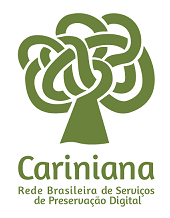Use of swine wastewater in oilseed radish crop: agronomic and environmental aspects
DOI:
https://doi.org/10.5433/1679-0359.2014v35n6p2931Palavras-chave:
Water reuse, Nonpoint pollution, Biomass, Energetic crop.Resumo
Swine effluent has been applied to soils to promote nutrient cycling and reduce the uncontrolled disposal of effluents into bodies of water. However, the use of these effluents on various crops has raised environmental and public health concerns. Oilseed radish crop (Raphanus sativus L.) is a winter crop planted in no-tillage systems as a green fertilizer that also can be used for biodiesel, and it requires high levels of nutrients for its development. Thus, the present study aimed to evaluate the environmental and agronomic effects of the application of swine wastewater on oilseed radish. The experiment was conducted in a 0.162 ha area with the following treatments: unirrigated (rainfed), irrigated, and fertilized with swine wastewater (370 m3 ha-1 cycle-1). After each rainfall event, analyses were conducted for the main macro and micronutrients in the runoff and percolated material from drainage lysimeters. Changes in the physical and chemical characteristics of the soil were also analyzed, as were the agronomic and nutritional indices of the dry crop phytomass in full blooming stage. Application of swine wastewater at a level of 370 m3 ha-1 produces a crop with better agronomic quality. Over the long term, however, caution should be taken regarding the surface runoff of NO3-, P, K, Mn and total salts and the percolation of NO3-, Na and Cu. Moreover, the rainfall occurred one day after fertigation contributed to the increase of the levels of P, K, Na, Cu, Zn and Mn in the percolated material.
Downloads
Downloads
Publicado
Como Citar
Edição
Seção
Licença
Copyright (c) 2014 Semina: Ciências Agrárias

Este trabalho está licenciado sob uma licença Creative Commons Attribution-NonCommercial 4.0 International License.
Semina: Ciências Agrárias adota para suas publicações a licença CC-BY-NC, sendo os direitos autorais do autor, em casos de republicação recomendamos aos autores a indicação de primeira publicação nesta revista.
Esta licença permite copiar e redistribuir o material em qualquer meio ou formato, remixar, transformar e desenvolver o material, desde que não seja para fins comerciais. E deve-se atribuir o devido crédito ao criador.
As opiniões emitidas pelos autores dos artigos são de sua exclusiva responsabilidade.
A revista se reserva o direito de efetuar, nos originais, alterações de ordem normativa, ortográfica e gramatical, com vistas a manter o padrão culto da língua e a credibilidade do veículo. Respeitará, no entanto, o estilo de escrever dos autores. Alterações, correções ou sugestões de ordem conceitual serão encaminhadas aos autores, quando necessário.
















